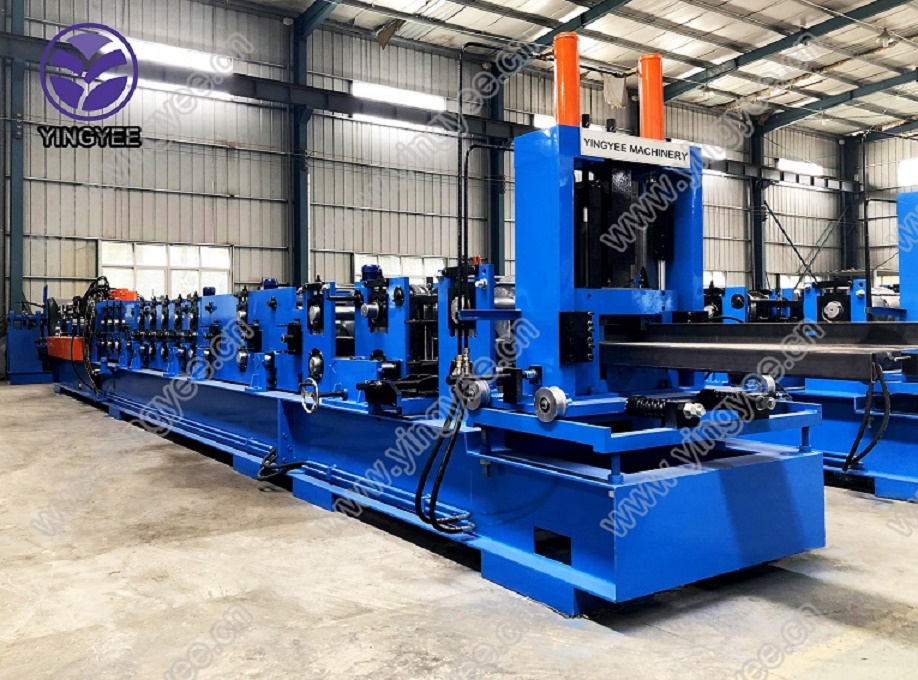
High-Frequency Tube Mill Innovations and Applications in Modern Manufacturing
The high-frequency tube mill, an essential piece of machinery in the metalworking industry, has revolutionized the way tubes and pipes are manufactured. This advanced equipment specializes in the production of high-quality tubes with precise dimensions, utilizing high-frequency welding technology that sets it apart from traditional methods. As industries evolve, the demand for efficient, reliable, and cost-effective manufacturing processes has propelled the development and adoption of high-frequency tube mills.
How High-Frequency Tube Mills Work
At the core of a high-frequency tube mill lies the principle of electromagnetic induction. The process begins with flat strips of metal, typically cold-rolled steel, which are fed into the mill. As the strips pass through a series of rollers, they gradually reshape into a tubular form. The real innovation occurs when the edges of the strip come together. High-frequency induction coils generate heat through the principles of electromagnetic induction, allowing the edges to be welded together without the need for external flame or filler material.
The welding process occurs rapidly and uniformly, ensuring that the heat-affected zone is minimized, which results in high-quality joints. The welded tube then goes through further processes, such as cooling, sizing, and cutting, to achieve desired specifications. This efficient production cycle allows for quick turnaround times and adaptability to various product requirements.
Key Advantages of High-Frequency Tube Mills
High-frequency tube mills offer numerous advantages over their traditional counterparts. One significant benefit is speed. These mills can produce large quantities of tubes within a short time frame, thereby enhancing productivity significantly. The rapid welding process allows for continuous production, which reduces downtime and increases efficiency.
Additionally, the quality of the finished products is often superior. The precise control of the welding parameters ensures consistent and high-quality welds throughout the production process. This reliability is critical, especially in applications where tubes are subjected to high stress or must meet stringent safety standards.
Moreover, high-frequency tube mills are versatile. They can produce a wide range of tube diameters and wall thicknesses, making them suitable for various applications in multiple industries, including construction, automotive, oil and gas, and manufacturing. The ability to quickly switch between different product specifications helps manufacturers meet the changing demands of the market.

Applications Across Industries
The applications of high-frequency welded tubes are extensive. In the construction industry, for example, structural steel tubes are used in buildings, bridges, and various infrastructures. Their high strength and lightweight properties make them an ideal choice.
In the automotive sector, high-frequency tubes are critical components used in manufacturing exhaust systems, chassis parts, and supports. The excellent weld integrity is vital for safety and performance in automotive applications.
The oil and gas industry also benefits from high-frequency tube mills. Tubing and piping used in drilling, transportation, and refining processes require robust materials that can withstand high pressures and corrosive environments. High-frequency welded tubes meet these needs, providing reliable solutions for challenging applications.
Future Trends
As technology advances, so too does the potential for high-frequency tube mills. Innovations in automation, artificial intelligence, and machine learning are poised to enhance the capabilities of these mills, allowing for smarter production processes. For example, predictive maintenance technologies could minimize equipment downtime, further increasing overall efficiency.
Moreover, sustainability is becoming a critical focus in manufacturing. The adaptability of high-frequency tube mills allows manufacturers to use recycled materials more effectively, reducing waste and environmental impact.
Conclusion
High-frequency tube mills represent a significant advancement in manufacturing technology, combining speed, precision, and versatility. Their ability to produce high-quality welded tubes has made them indispensable across various industries. As manufacturers continue to innovate and adapt to new challenges, the importance of high-frequency tube mills will undeniably grow, shaping the future of metal fabrication and contributing to a more efficient and sustainable manufacturing landscape.